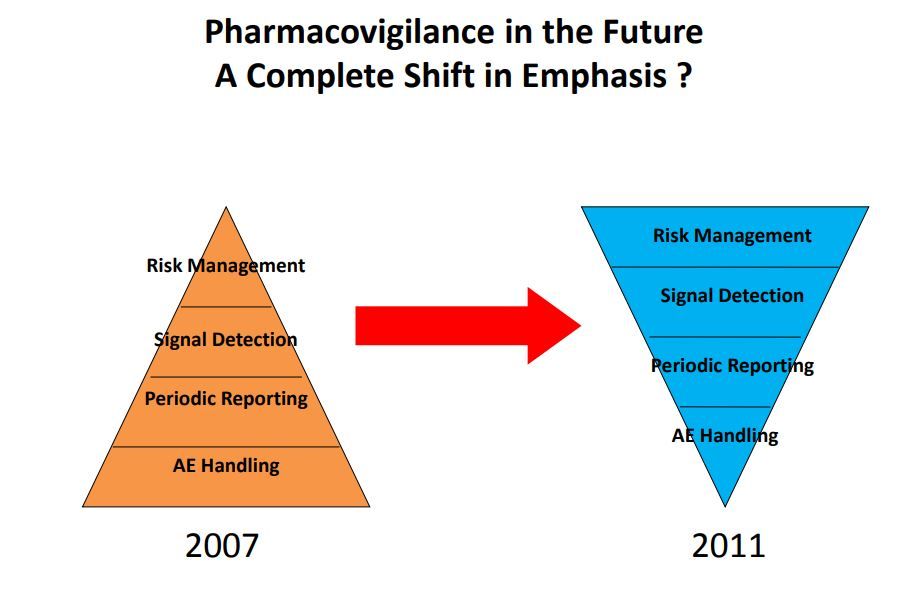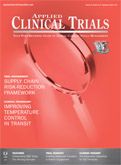The Shifting Perspectives on Pharmacovigilance in Europe
PV experts face new challenges as focus in field moves toward acting on real-world evidence insights.
The European CRO Federation, or EUCROF, recently posted Pharmacovigilance in 2020: Boldly Shaping the Future, developed by its Pharmacovigilance Working Group. The aim of the paper is to offer insight into the increasing challenges of pharmacovigilance (PV) in the European Union (EU), and its effect on those professionals in this space. This paper is the first in a planned series, and the information in the report was gleaned from various sources, including conferences and publications, the European Medicines Agency (EMA), institutional websites, Medline, and from industry and contract research organizations (CRO) experience.
The authors lay out the fact that “the concept of the ‘benefit/risk’ ratio (no longer called ‘risk/benefit,’ which itself is a significant change) has become the common denominator not only of PV, but also of practically all drug-related regulatory activities throughout the lifecycle of a medicine, from preclinical to postmarketing.” They agree that this is a sound approach, and in line with current clinical practice, but also state it’s made PV activities significantly more complex, “since it implies that all benefit and risk data about a drug have to be put in context before any decision can be made on how to proceed.”
The authors maintain that, amid the broader concept of real-world effectiveness, PV experts have to become benefit experts, capable of analyzing complex data from different sources with highly variable quality.
According to the report, the EMA is shifting perspective on PV from an “event-based” approach (i.e., making sure that all necessary data were collected properly and in a timely manner) to an emphasis instead being placed on what could be done with the available information.
The authors say, “….activities such as signal detection and signal management, along with risk management plans (RMPs) have become core pharmacovigilance activities. RMPs are a clear example of “proactive PV,” since they give great importance not only to managing risk, but also to what we do not know about a medicine and to what can be done to minimize the possible consequences and/or to fill knowledge gaps.

The report, of course, is focused on the EU, and the authors concede that an examination beyond those borders is beyond the scope of the report. However, they do list specific examples of other countries that are requiring RMPs, and others developing legislation and regulatory guidance inspired by the EMA’s good pharmacovigilance practices (GPVs).
With the increased challenges, EUCROF PV Working Group also advises that the use of an outsourcer specializing in PV could benefit sponsors.
PV is also going to have to become even more cross-functional, playing an increasingly important role across the lifecycle of a drug. This implies that all processes and procedures should be periodically reevaluated for adequacy and, if needed, improved, modified, or altogether substituted.
The common denominator for this reevaluation should be the adoption of a proactive safety approach integrated as much as possible on top and across departments/divisions, but with provisions to include also affiliates and partners/vendors.
If these challenges are met, PV will allow marketing authorization holders not only to be compliant with existing and future regulations (no small feat in itself), but also to gain a competitive edge.
As stated earlier, all the present requirements, and the certainty that the situation will become more and more complex in the future, are probably “too much for one person” and possibly also “too much for a single group,” with the possible exception of the largest companies.
This complexity has led to a growth in outsourcing of PV-related services. For most companies, delegating (wholly or in part) PV activities to organizations with specialist knowledge and expertise will become the most cost-effective solution.
- The EUCROF Pharmacovigilance Working Group

Improving Relationships and Diversifying the Site Selection Process
April 17th 2025In this episode of the Applied Clinical Trials Podcast, Liz Beatty, co-founder and chief strategy officer, Inato, discusses a number of topics around site engagement including community-based sites, the role of technology in improving site/sponsor relationships, how increased operational costs are impacting the industry, and more.
Behind the Buzz: Why Clinical Research Leaders Flock to SCOPE Summit
February 7th 2025In this episode, we meet with Micah Lieberman, Executive Conference Director for SCOPE Summit (Summit for Clinical Ops Executives) at Cambridge Innovation Institute. We will dive deep into the critical role of collaboration within the clinical research ecosystem. How do we bring together diverse stakeholders—sponsors, CROs, clinical trial tech innovators, suppliers, patients, sites, advocacy organizations, investors, and non-profits—to share best practices in trial design, program planning, innovation, and clinical operations? We’ll explore why it’s vital for thought leaders to step beyond their own organizations and learn from others, exchanging ideas that drive advancements in clinical research. Additionally, we’ll discuss the pivotal role of scientific conferences like SCOPE Summit in fostering these essential connections and collaborations, helping shape the future of clinical trials. Join us as we uncover how collective wisdom and cross-industry partnerships are transforming the landscape of clinical research.
FDA-Approved Gene Therapy Beqvez Shows Sustained Efficacy, Safety in Long-Term Hemophilia B Trial
April 17th 2025Beqvez (fidanacogene elaparvovec), an FDA-approved one-time gene therapy for hemophilia B, demonstrated sustained factor IX expression, low bleeding rates, and a favorable safety profile over long-term follow-up.